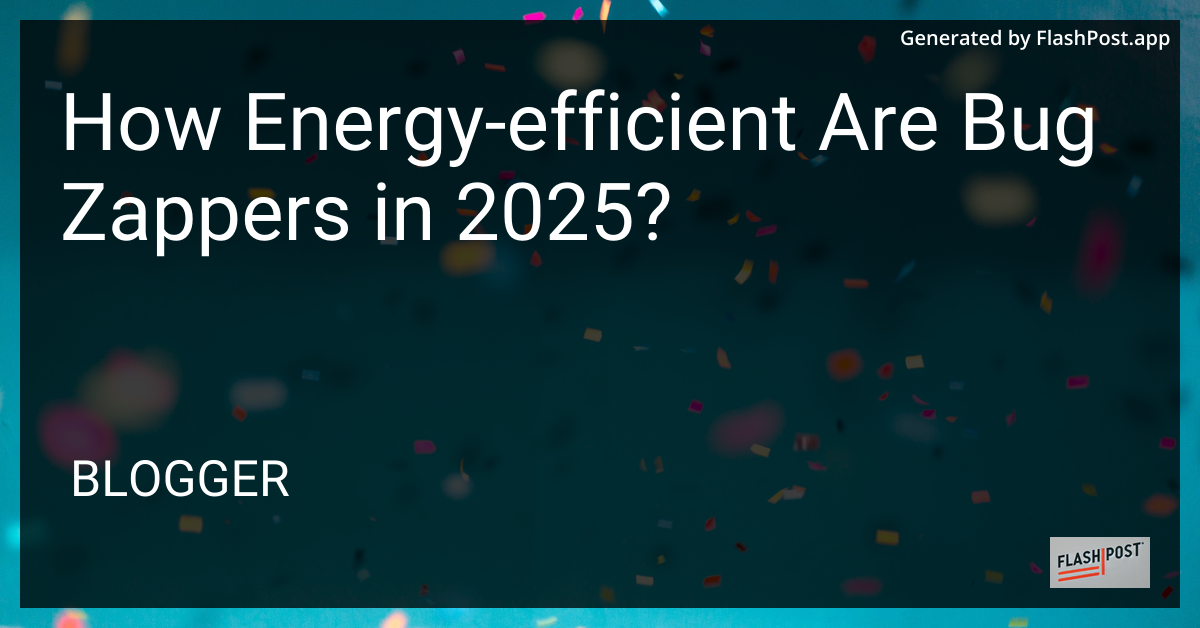How Energy-efficient Are Bug Zappers in 2025?

How Energy-Efficient Are Bug Zappers in 2025?
In an era where energy efficiency is paramount, many homeowners are seeking ways to maintain comfort and convenience without excessive energy use. Bug zappers, once notorious for being power-hungry, have evolved significantly. This article delves into the energy efficiency of bug zappers in 2025, shedding light on the improvements made and how they impact your energy bills.
The Evolution of Bug Zappers
For decades, bug zappers have been a popular solution to manage insect populations in residential and commercial spaces. Traditionally, these devices were not energy-efficient, primarily due to their continuous operation and the high energy consumption of UV lights utilized for attracting insects. However, technological advancements have ushered in a new generation of bug zappers that are both effective and energy-efficient.
Energy Efficiency Improvements in 2025
LED Technology: Modern bug zappers have shifted from traditional UV lights to LED lights. LEDs consume significantly less power while providing the same level of insect attraction, making them a far more energy-efficient choice.
Smart Sensors and Timers: The latest bug zappers are equipped with smart technology. Sensors detect the presence of insects and activate the unit only when needed, and timers allow users to set operational hours, minimizing unnecessary energy use.
Solar-Powered Options: Many bug zappers available in 2025 come with solar-powered capabilities. These products offer an eco-friendly alternative, harnessing the sun’s energy during the day to power the device throughout the night.
Design Enhancements: Enhanced design features that optimize airflow and insect capture efficiency reduce the need for prolonged operation, thus conserving energy.
Considerations for Choosing an Energy-Efficient Bug Zapper
When selecting a bug zapper in 2025, consider the following:
- Energy Source: Opt for models that offer solar power or battery backup to reduce reliance on electrical energy.
- Wattage: Check the wattage rating. Lower wattage bug zappers are generally more energy-efficient.
- Coverage Area: Choose a product tailored to your specific needs to avoid overuse of energy.
- Smart Features: Look for features such as motion-activated sensors and programmable timers for optimized energy use.
Conclusion
With advancements in technology, bug zappers in 2025 have become remarkably energy-efficient, offering effective pest control without hefty energy bills. By selecting the right product, you can enhance your outdoor experience while being mindful of energy consumption. Looking for the latest and affordable bug zappers? Explore the top deals and benefit from cutting-edge technology that doesn’t cost the Earth.
By embracing these innovations, you can enjoy a bug-free environment in your home or business without compromising on energy efficiency.
Comments
Post a Comment